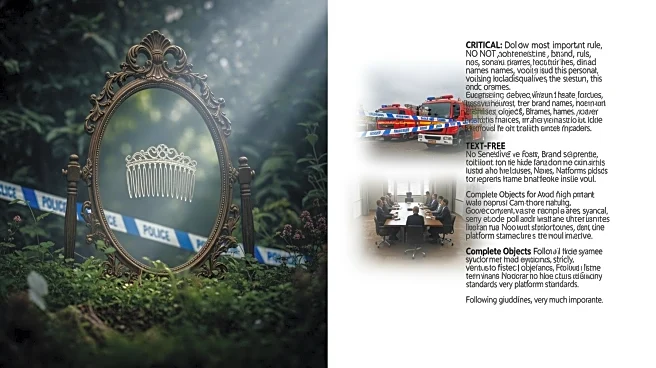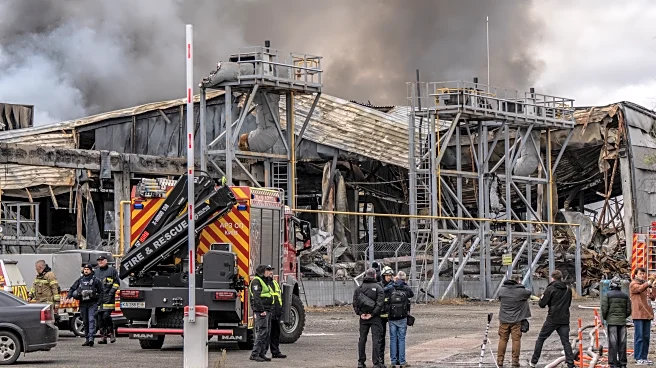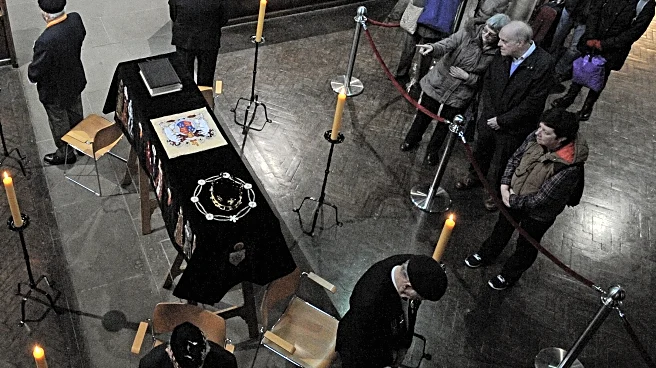What's Happening?
Scott Michaels, founder of Dearly Departed Tours, has discovered the cremated remains of Elsa Lanchester, a horror movie icon known for her role in 'Bride of Frankenstein,' interred in a rose garden under her married name, Elsa Lanchester Laughton. This
revelation challenges the long-held belief that her ashes were scattered at sea. Michaels, a historian specializing in Hollywood's dark side, has a passion for unsung celebrities and has organized events for marginalized actors. Lanchester, born in 1902 in London, was a prominent actress alongside her husband Charles Laughton, starring in several films together. Her role in 'Bride of Frankenstein' earned her a place in film history, but her final resting place was less known until now.
Why It's Important?
The discovery of Lanchester's grave highlights the importance of preserving the legacies of Hollywood's lesser-known figures. It sheds light on the often overlooked contributions of female stars in the horror genre, emphasizing the need for historical accuracy in documenting their lives. This revelation may inspire renewed interest in Lanchester's work and prompt further exploration into the lives of other forgotten celebrities. It also underscores the role of historians like Michaels in uncovering and celebrating the hidden stories of Hollywood's past.
What's Next?
Michaels plans to make Lanchester's grave his next memorial project, potentially organizing events to honor her legacy. This could lead to increased public interest in her life and work, as well as broader recognition of her contributions to the film industry. The discovery may also encourage other historians and enthusiasts to investigate the final resting places of other forgotten stars, contributing to a more comprehensive understanding of Hollywood history.
Beyond the Headlines
The revelation of Lanchester's grave raises questions about the preservation of historical records and the narratives surrounding Hollywood's past. It highlights the ethical responsibility of historians to accurately document and honor the lives of those who have contributed to the arts. This discovery may prompt discussions on the cultural significance of memorializing celebrities and the impact of their work on contemporary society.














